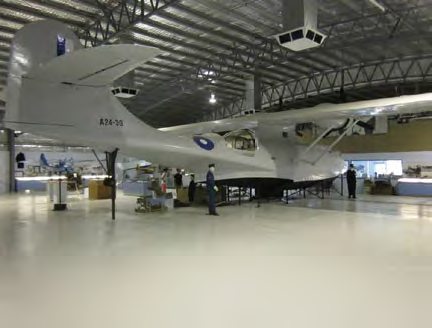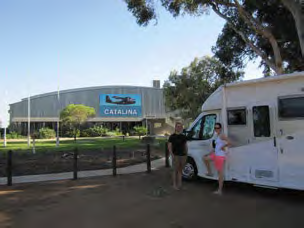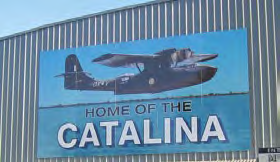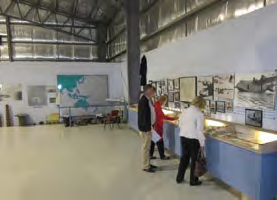
My wife and I were journeying along the Murray River in our beloved Sunliner Ducato motorhome when we stumbled upon the home of the historic Catalina flying boats. Visiting this iconic area, located 16 kilometres south of Swan Hill on the shores of the picturesque Lake Boga, was a real eye opener for us.
After almost 30 years of dedicated effort, mostly from volunteers, the Lake Boga Lions Club has completed a fitting memorial to those who worked with the Catalina flying boats, which were an integral part of Australia’s defence during World War II.

It was not until the Japanese air raids on Broome in 1942, where 16 of the aircraft were destroyed, that the establishment of a safe haven for the flying boats was seen as essential to the defence of Australia. The order to create a flying boat repair depot was marked as top secret and the search for an ideal location began.
Lake Boga was the perfect site; it was free of obstructions, with open waterways and had access to a major road and railway. Without delay, the order to build Lake Boga was issued.

Lake Boga became an important air base, servicing many sea planes, including a great number of the 168 Catalina’s that flew with the Royal Australian Air Force (RAAF) during the war. The first RAAF Catalina flying boat flew in on July 12, 1942.
To complete the base a signals bunker was constructed, two slipways (still being used today as boat ramps) and various administration buildings. To the west of the town, accommodation quarters were constructed to house a workforce of almost 1,000 technicians, including members of the Women’s Auxiliary Australian Air Force (WAAAF). During the war years, 416 aircraft, including US and Netherlands Air Force planes, were serviced at the repair depot.
In 1997, the Lake Boga Lions Club, in recognition of the repair depot and to establish a significant tourist attraction, developed the Lake Boga Flying Boat Museum - Home of the Catalina. The original on-site signals bunker has been converted to interpret and display memorabilia from the repair depot.
The facility was further developed with the provision of a Catalina aircraft lovingly restored by the work of many volunteers. The aircraft was salvaged from a local farmer who bought it as scrap after the war. It was a major task to relocate all the parts of the flying boat and re-assemble it on the foreshore of Lake Boga next to the signals bunker, on the exact location of the wartime repair depot.

One of the prime movers of the restoration work was Dick Peel who remembers the big Cats landing on Lake Boga during the war years. Dick is very proud of the work that has been achieved at the Museum. “The Catalina Flying Boat and all the other items of memorabilia accurately recall Lake Boga’s significant involvement in the war effort”, Dick said. “I get a great kick out of the many visitors who gain enjoyment from visiting the Museum and seeing what took place.”
Dick used to live near the Lake during the war and his family often entertained pilots on their orchard property. Dick’s eyes still light up as he recalls the Catalina joy flights the pilots would take him on.

The final piece of the Museum was put in place with the opening of a new hangar in April 2011. The air conditioned hangar houses the Catalina aircraft, a theatrette, resource library, visitor amenities and many of the exhibits formerly on display in the signals bunker. This has allowed the restoration of the signals bunker to depict its original condition and purpose. The hangar was erected thanks to the efforts of local volunteers and significant financial contributions from the local council and both state and federal governments.

We, like most visitors to the attraction, had no idea of Lake Boga’s history and the role it played during the war years. The home of the Catalina truly is an amazing place and was totally unexpected. The almost perfectly round lake is not only steeped in Australian history but is a magnificent sight and a great place to relax and enjoy an afternoon swim.
Category: Unknown
Written: Fri 01 Mar 2013
Printed: March, 2013
Published By:
Stephen Matthews V78512